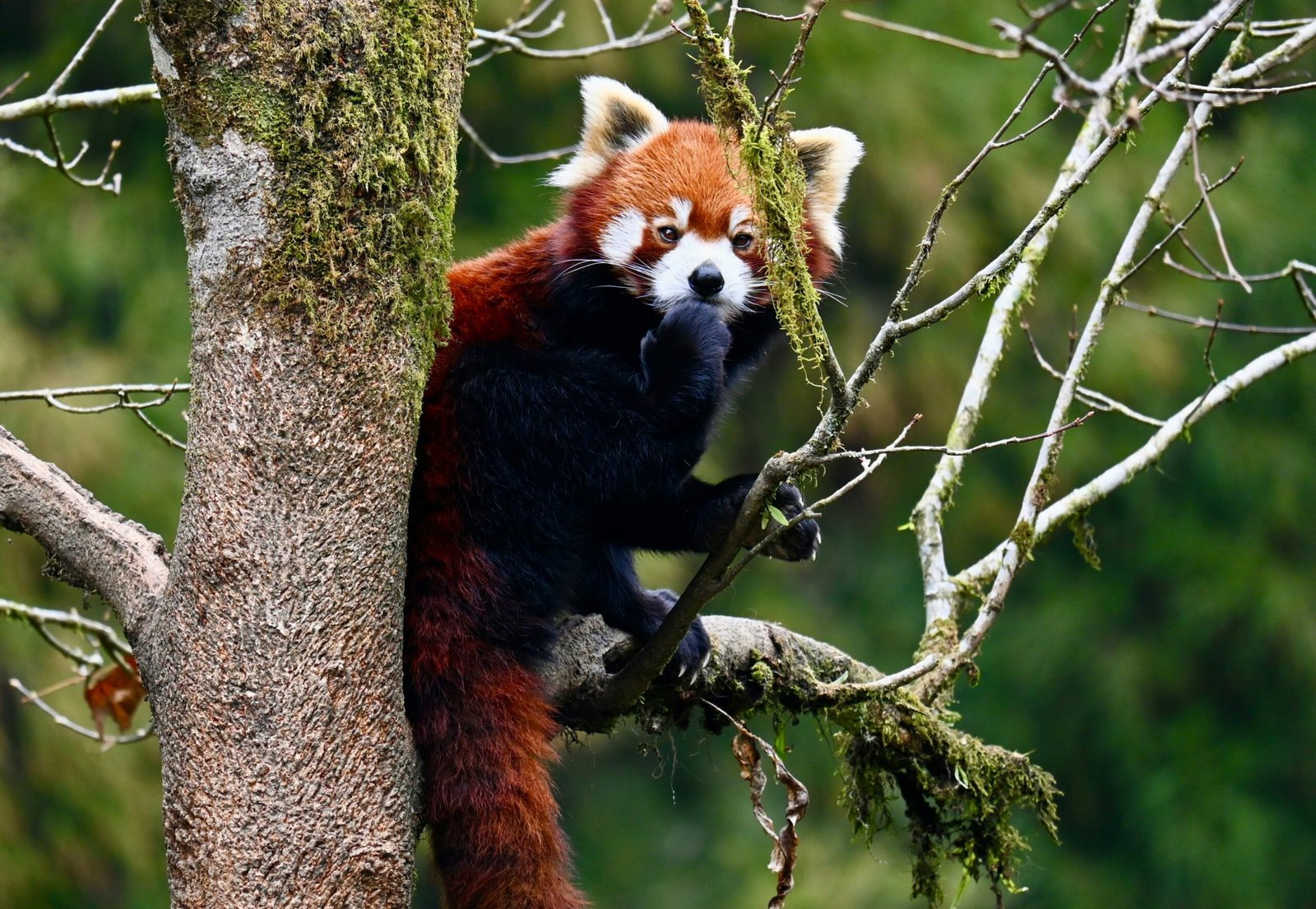Introduction to Rare and Fascinating Animals
The world we inhabit is teeming with life, yet some creatures remain shrouded in mystery and intrigue. Among the diverse array of animals that roam our planet, a select few stand out for their rarity and fascinating characteristics. These unique species captivate our imagination and remind us of nature’s boundless creativity. From creatures that seem to defy logic to those whose survival hangs by a thread, each has its own story worth exploring.
As we delve into the realm of rare animal species, we’ll uncover not just their peculiar traits but also highlight the pressing importance of biodiversity in preserving these wonders for future generations. Join us on this journey as we discover remarkable beings like the Axolotl, Okapi, Pangolin, and Aye-Aye—each one a testament to life’s extraordinary adaptability. Let’s embark on an adventure filled with awe-inspiring facts and insights about these amazing animals!
The Importance of Biodiversity
Biodiversity is the cornerstone of a healthy planet. It encompasses the variety of life forms, ecosystems, and genetic diversity that exist within our environment. Each species plays a unique role in maintaining ecological balance.
Healthy ecosystems provide essential services. These include clean air and water, pollination of crops, and regulation of climate. When biodiversity thrives, so do humans.
Loss of biodiversity can lead to dire consequences. Species disappear at an alarming rate due to habitat destruction and climate change. This loss disrupts food chains and diminishes resilience against environmental shifts.
Moreover, diverse biological resources have immense value for medicine and agriculture. Many discoveries are rooted in nature’s vast array of organisms. By protecting biodiversity, we safeguard potential solutions for future challenges.
The intricate web connecting all living things highlights just how crucial every single species is to survival on Earth—humans included!
Endangered vs. Extinct Species
Endangered species are those at risk of becoming extinct in the near future. Their populations decline due to various factors, including habitat destruction and climate change. Conservation efforts aim to protect these animals and their habitats.
On the other hand, extinct species are gone forever. Once vibrant members of our planet’s biodiversity, they no longer exist. The dodo bird and woolly mammoth serve as stark reminders of what we can lose if we don’t act.
Understanding the difference between endangered and extinct is crucial for conservationists. It highlights how urgent it is to save threatened species before it’s too late. Each lost animal represents a unique part of our ecosystem that can never be replaced.
Preserving biodiversity not only protects these remarkable creatures but also ensures a balanced environment for all living things on Earth. Every effort counts in this fight against extinction.
Examples of Rare and Fascinating Animals:
The Axolotl is a remarkable creature, often dubbed the “walking fish.” This amphibian can regenerate its limbs and even parts of its heart. Found primarily in Mexico, it captivates scientists and nature lovers alike.
Next we have the Okapi, sometimes referred to as the zebra giraffe. With its striking striped legs and long neck, this elusive mammal roams the dense rainforests of Congo. Its unique appearance makes it both intriguing and endearing.
Then there’s the Pangolin, known as the scaly anteater. Covered in keratin scales, this nocturnal animal curls into a ball when threatened. Sadly, it’s one of the most trafficked mammals due to demand for its scales.
Meet the Aye-Aye—a lemur with an eerie yet cute charm. Native to Madagascar, its elongated middle finger helps it find insects within tree bark. Each of these species tells a story that highlights our planet’s incredible diversity.
A. Axolotl – The Walking Fish
The axolotl, often affectionately dubbed the “walking fish,” is not a fish at all. It belongs to the amphibian family and has captivated many with its unique appearance and regenerative abilities.
Native to Mexico’s lakes, particularly Lake Xochimilco, this creature sports external gills that resemble feathers. These vibrant appendages give it an enchanting look while aiding in respiration.
Unlike most amphibians, axolotls remain aquatic throughout their lives. This neotenic trait allows them to retain juvenile features even as adults. Their ability to regenerate limbs—and even parts of their heart and brain—has sparked significant interest in scientific research.
Sadly, due to habitat loss and pollution, these remarkable animals are critically endangered. Conservation efforts strive to restore their natural habitats and raise awareness about their plight among enthusiasts worldwide.
B. Okapi – The Zebra Giraffe
The okapi is truly a marvel of nature, often called the “zebra giraffe.” This elusive creature roams the lush rainforests of the Democratic Republic of Congo. With its striking coat featuring zebra-like stripes on its legs and a long neck reminiscent of a giraffe, it looks like an artist combined two very different animals into one.
Despite their unusual appearance, okapis are actually more closely related to giraffes than zebras. They have large ears that help them detect sounds in their dense habitat. Their keen sense of hearing keeps them safe from predators.
Okapis are herbivores, primarily feeding on leaves, fruits, and grasses found within their forest home. These fascinating animals play an essential role in maintaining the ecosystem by dispersing seeds as they move through the underbrush. However, with diminishing habitats due to deforestation and poaching threats, these gentle giants face significant challenges for survival.
C. Pangolin – The Scaly Anteater
The pangolin, often called the scaly anteater, is one of nature’s most intriguing creatures. Covered in hard, protective scales made of keratin, it stands out among mammals. These unique adaptations help them deter predators and thrive in their habitats.
Pangolins are nocturnal foragers. They use their long tongues to slurp up ants and termites with remarkable efficiency. This specialized feeding technique has earned them a niche role in maintaining ecosystem balance.
Sadly, they face severe threats from illegal wildlife trade due to demand for their scales and meat. Conservation efforts strive to protect these fascinating animals and secure their future.
Despite being shy by nature, pangolins evoke curiosity wherever they inhabit. Their secretive lifestyle only adds to their allure as one of the world’s rarest species deserving our attention and protection.
D. Aye-Aye – The Creepy Yet Cute Lemur
The aye-aye is a truly unique creature that captivates and intrigues. Found only in Madagascar, this lemur boasts large eyes and long fingers. Its most notable feature? A thin, elongated middle finger used to tap on trees.
This tapping technique helps the aye-aye locate grubs hiding beneath bark. Once it detects a meal, it gnaws through the wood with its sharp teeth. It’s an impressive display of adaptation.
Despite its quirky appearance, many people view the aye-aye as eerie or unsettling. Local folklore often paints it as an omen of bad luck. However, those who take the time to observe this remarkable animal find charm in its strange ways.
Aye-ayes play a vital role in their ecosystem by controlling insect populations and aiding tree growth. Their survival is crucial for maintaining biodiversity in Madagascar’s fragile habitats.
Conservation Efforts for these Species
Conservation efforts for rare and fascinating animal species are crucial in ensuring their survival. Various organizations worldwide dedicate resources to protect these unique creatures from extinction.
One successful initiative involves habitat restoration, which is vital for species like the Axolotl. By improving water quality and reestablishing natural environments, we create safe spaces for these aquatic wonders.
In addition to restoring habitats, breeding programs have proved effective. The Okapi Conservation Project aims to increase the population of this enigmatic animal through controlled breeding in protected areas.
Education plays a significant role as well. Raising awareness about the plight of pangolins helps combat illegal wildlife trade. Engaging local communities can foster a sense of stewardship toward these animals while promoting sustainable practices.
International cooperation strengthens conservation efforts by uniting countries in protecting shared ecosystems and endangered species across borders.
The preservation of rare and fascinating animal species is crucial for maintaining a balanced ecosystem. Conservation efforts have been ramping up globally, focusing on protecting these unique creatures and their habitats. Organizations are working tirelessly to ensure that we do not lose any more of our planet’s remarkable biodiversity.
For species like the axolotl, okapi, pangolin, and aye-aye, every effort counts. Habitat restoration projects help create safe environments where these animals can thrive. Legislation is being put in place to combat poaching and illegal trade practices that threaten their existence.
Education plays a key role as well. Raising awareness about the importance of preserving biodiversity encourages communities to participate in conservation initiatives actively. By fostering appreciation for these fascinating animals, we motivate people to take action.
These extraordinary species remind us of nature’s creativity and resilience. Protecting them means safeguarding our world’s rich tapestry of life for future generations to cherish and explore further. As we continue this journey together, every small step towards conservation makes a significant impact on our collective responsibility toward the natural world around us.

